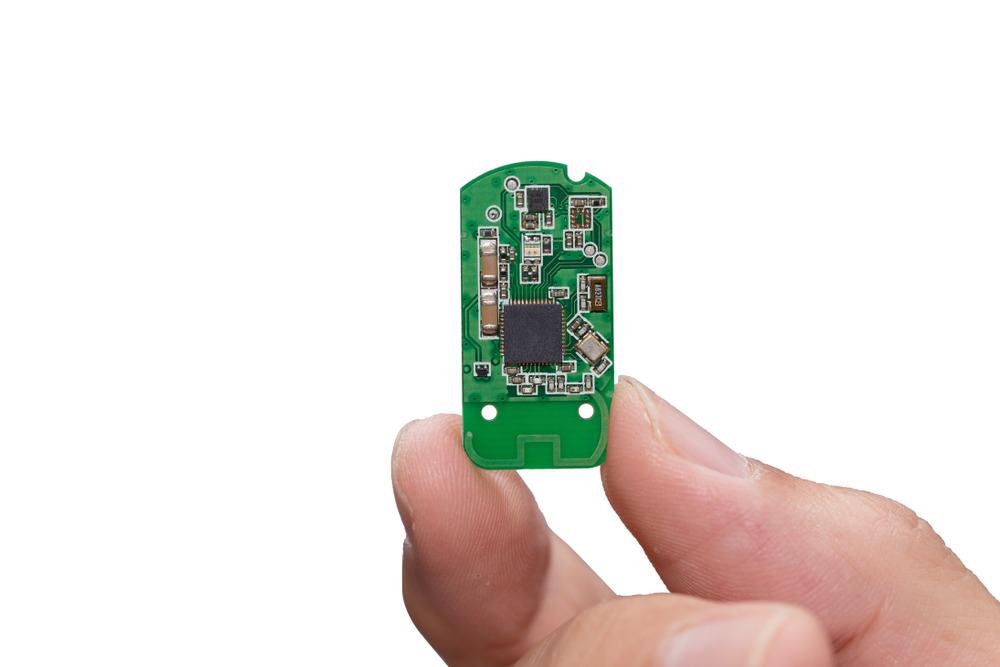A special semiconductor material has been utilized by a scientist from the University of Toledo to both shrink technology and reduce energy use to assist the U.S. Navy to become highly fuel- and energy-efficient.

Image Credit: Quality STock Arts/Shutterstock.com
The Office of Naval Research (ONR) granted Dr. Raghav Khanna, associate professor in the Department of Electrical Engineering and Computer Science, a three-year, $510,000 grant to design circuits that are smaller in size and considered highly effective for aerospace systems and electric Navy ships.
ONR, a funding agency of the U.S. Department of Defense, has given this grant to Khanna to promote collaboration with the U.S. Navy’s corporate research laboratory, the U.S. Naval Research Laboratory (NRL).
We are proud to collaborate with the NRL on a project critical to both sustainability and national security. Fuel economy and power efficiency translate to operational flexibility for our military.
Dr Raghav Khanna, Associate Professor in the Department of Electrical Engineering and Computer Science, University of Toledo
Silicon is the component predominantly used in power devices, but Khanna’s group will design circuits by making use of gallium nitride (GaN) instead, in direct-current (DC) microgrids for electric Navy ships. The aim is to help develop 20-kV GaN power electronic devices to enable power distribution.
According to Khanna, next-generation microgrids—self-contained power distribution grids set up on land but work on solar and wind power or on an electric navy ship at sea, will profit from DC electricity.
Traditional power distribution grids work on alternating-current (AC), but with the emergence of modern circuit materials like gallium nitride, the study indicates that DC microgrids might be the futuristic power architecture.
Gallium nitride technologies have been demonstrated to provide greater performance than their silicon-based counterparts, especially in DC microgrids, while decreasing the energy and physical space required to realize that performance.
Gallium nitride can operate at much higher voltages, frequencies and temperatures.
Dr Raghav Khanna, Associate Professor in the Department of Electrical Engineering and Computer Science, University of Toledo
Similar to the devices modeled by Khanna, high-voltage power electronic devices are required to achieve the high-voltage potential of future DC microgrid architectures.
Khanna is modeling what the materials would appear to be and simulating how they would operate. The Naval Research Laboratory will take the UToledo models and manufacture the devices.
Dr Khanna and his group have been able to develop experimentally validated simulation models of these important high voltage GaN devices. Their models allow them to closely examine the physics that govern the device’s operation, allowing innovation of new approaches to improve performance, manufacturability and reliability, which we can implement into our design and fabrication process.
Dr Andrew Koehler, Electronics Engineer, Naval Research Laboratory
The technology is being developed for use aboard Navy ships for communications systems, power generation systems, and weapons systems, which could all be electrified.
“We’ll start with a 1-kilovolt device, and gradually move up to 5, 10 and 15. This will allow us to develop learning cycles at each incremental voltage, and hopefully the process will get faster and faster as we fulfill each milestone. By the end of three years, we hope to have a 20-kilovolt gallium nitride-based device,” added Khanna.
A single 20-kV gallium nitride device has the ability to provide power for a minimum of 20 Tesla car batteries.
Khanna concentrates his study on next-generation power electronics and is also using gallium nitride in a NASA-funded project to optimize power for space exploration. Internally, he will be working with faculty from the UToledo College of Engineering with expertise in materials to help realize such targets for both the U.S. Navy and NASA.
Before joining UToledo in 2015, Khanna worked for HRL Laboratories LLC in California where he worked directly on the development of gallium nitride-based battery chargers for electric vehicles.